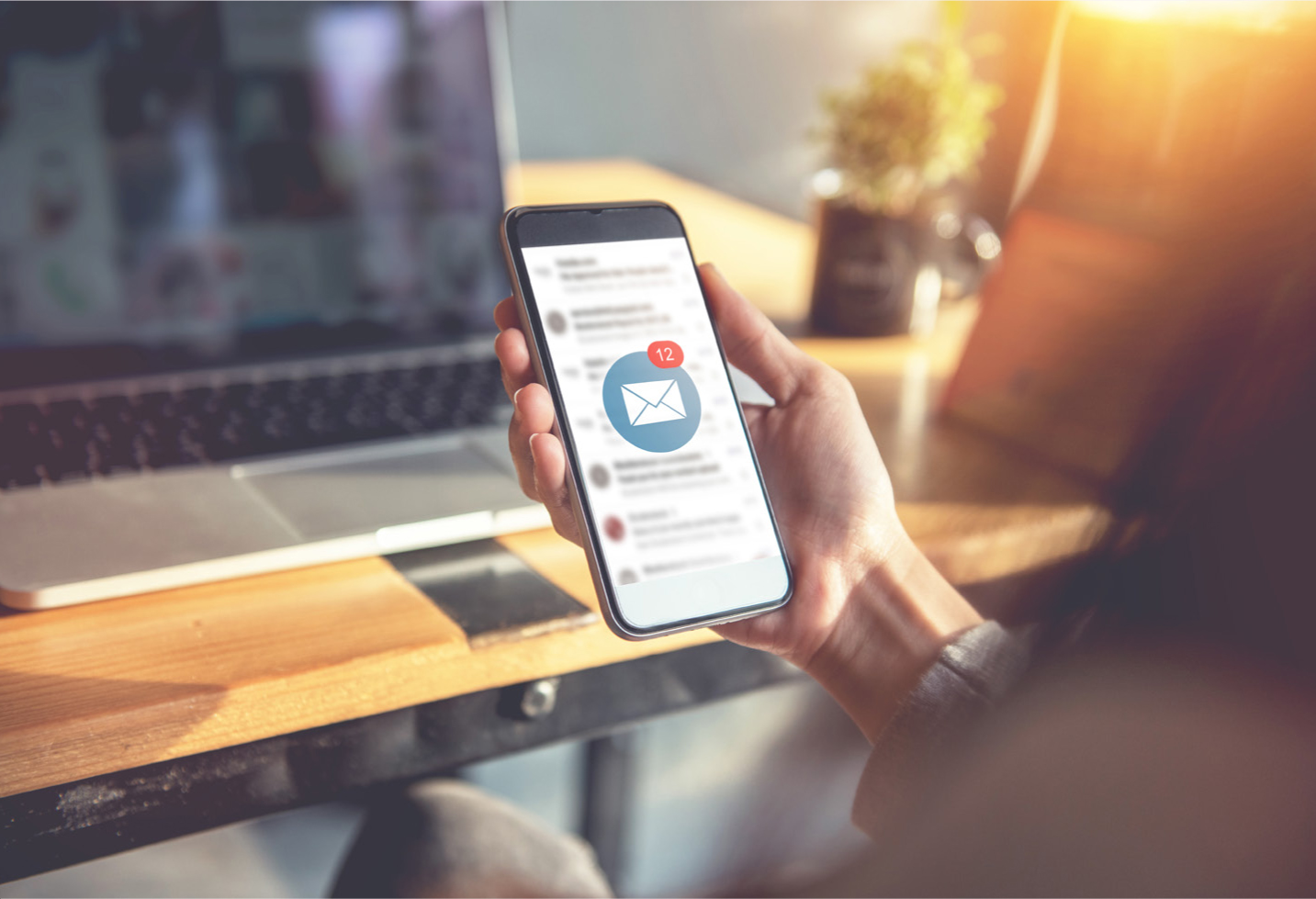
 Medical questionnaires filled out by patients can be used to discover any other potential concerns and introduce the prospect of various other services
Medical questionnaires filled out by patients can be used to discover any other potential concerns and introduce the prospect of various other services
Internal marketing refers to promoting to your existing patient list. It will be your preferred methodology to attract patients. It will be the lowest costings and the best return on investment. In marketing terms, we refer to this as ‘picking the lowest hanging fruit’.
Let's take a look at the numerous internal marketing strategies we can use.
Medical skin questionnaire
Every new client fills in a medical questionnaire, and at the end of this form, we always ask three simple, tick-box, yes/no questions:
- Are you concerned about your skin complexion?
- Are you concerned about fine lines and wrinkles?
- Are you concerned about the loss of volume?
If any patient leaves this section blank or circles ‘No’ I will not mention anything about facial aesthetics. However, this will plant a seed in the patient's mind that we are now offering these services. They may have friends and family members interested in these services and I have no doubt they will mention us to them.
» Before sending an e-newsletter, it is vital that you understand the legalities regarding marketing emails. As sending e-newsletters is a direct form of marketing, under UK law, you must check that patients want to be contacted «
Obviously, if a patient has circled ‘Yes’ to any of the three questions, this then gives me an invitation to talk about their concerns and what solutions we have.
Treatment menu
Following on from the above point, we have devised a grid, where on the left we have common skin concerns a patient may ask about. On the right, we have the possible solutions. Most concerns will have more than one possible solution. This is, again, reinforcing our passion in treating the whole face, not just lines. You do not want to be a line-chaser. During the consultation, we describe to the patient and explain how each solution can help the concern they have highlighted. For some reason, if the client sees it written, it will lend you greater credibility.
Before and after pictures
Nothing speaks more about your work and experience than pictures. One of the most frequently asked questions of new patients is: ‘Can I have a look at some pictures?’. We use these in two ways:
- A leather-bound folder in reception
- A mini-PowerPoint presentation in the consultation room with more detail on patient studies and concerns, and what was done.
I suggest showcasing pictures of patients that have a similar depth of problem and age as the patient undertaking the consultation. You may wonder what pictures are shown. We have covered this in the patient journey and assessment. You need to get the patient's written consent to use their pictures.
In-house promotional material
This is readily available from company reps. However, we do limit this on our premises and prefer our own branded ones. Make sure the posters are framed and never use clear tacks. Just stick them to the walls.
Include patient information packs and brochures. The ideal content in this patient information pack could be a gentle introduction to face aesthetics and must be accompanied by your in-house informational material. A word of warning: have your price list as a separate insert into the brochure. This way, if your prices change, you do not need to reprint the whole brochure.
Free report
Even though this is time-consuming, it is worth the extra effort. The report we have produced is educational and advises the patient how to look after their skin to reduce premature ageing. It is given to all new patients whether they have treatment or not. It positions you as an expert, and the patient leaves thinking, ‘If they give this to me for free, what would they do when I pay for a service?’. This is referred to as educational based marketing. This form of marketing is less intrusive than stuffing leaflets in a patient's face, more commonly known as pull marketing compared to push marketing. You are pulling the patient towards you with valuable, useful educational content and not just ‘pushing’ promotional material towards them.
Pamper evenings
An excellent way to network is with other image-related and beauty services. We have held numerous ‘10 years younger’ evenings. Space permitting, we allocate in our practice a room to each service provider. We are, as well as other roles, image consultants, semi-permanent makeup artists, professional life coaches, photographers, hairdressers, eyelash specialists and gel nail providers. They each invite their top 10 clients, and we do the same. We provide treatments and special offers on the day. What has worked well is having a total package with other partners on the nights, so if the clients are interested in a couple of services, they save considerably when they book them as a package.
Birthday vouchers
Everyone loves to feel special on their birthday, so why not send your patient a card celebrating their birthday with voucher for £10 off any of your facial aesthetic services? To create urgency, we always put an expiry date of 1 month on the voucher. We have an expiry date of one month after their birthday. You want to strike while the iron is hot but be aware of guidelines and restrictions that apply to prescription-only medicines.
We had an occasion where a husband wanted to buy his wife some facial aesthetic vouchers for her birthday. He was not too sure how much to get her, and we said it was difficult to know without seeing her face and then advising on what treatment we would recommend. He left and returned a couple of days later with a photograph of her, we thanked him and said it would still be hard to work out and also it would be dependent on what she is unhappy with, he then replied, I want it all changed, we politely stated that it is the patient's choice to what they want, we never saw him or his wife again. So, I wonder what he eventually got her for the birthday.
You also need feedback forms to be on top of your game regarding making sure you are exceeding patients' desires. If you are failing in any particular department, you want to know as soon as possible, so that you can rectify it.
 Birthdays are a great way to draw in patients, as clinics can send out special birthday vouchers, for example, £10 off facial aesthetic services
Birthdays are a great way to draw in patients, as clinics can send out special birthday vouchers, for example, £10 off facial aesthetic services
Treat your team
Your team are going to be ambassadors for your practice, and a lot of the patients will ask them questions more than they would ask the clinicians themselves, so you need to make sure your team can be access that treatment. If they have experienced it, they are in a better position to answer questions that patients may have.
Awards ceremony
Consider an annual black tie event to celebrate your patients and your team members. You can have many categories such as most referred business, longest standing patient, most improved, most nervous, best team member, most improved team member, etc. Judges are local contacts you would like to do business with.
E-newsletters
One of the best strategies we have used that has given us the best results are e-newsletters, and I will now delve down deeper into this particular subject.
Legal requirements
Before sending an e-newsletter, it is vital that you understand the legalities regarding marketing emails. As sending e-newsletters is a direct form of marketing, under UK law, you must check that patients want to be contacted or are happy for you to send them offers or promotions by email, and give them a chance to object. For new patients, this can be via an opt-in or opt-out tick box when they first register at your clinic; for existing patients, you could seek their permission when they next come to the clinic and give them an option to opt-in. I would also advise you to inform your patients of what to expect in your e-newsletters and how often they will receive it; I do this by showing them an example of an old e-newsletter sent and then have an opt-in box that the patient ticks, stating: ‘I am happy to receive e-newsletters from ‘ABC Clinic’, which may include promotional offers and a statement to say they have been shown an example of what will be sent. I prefer the opt-in as you know that patient is interested in receiving your e-newsletter. With an opt-out, you will send the e-newsletter to everyone and this may irritate the patient. There is also a risk of being blacklisted with certain email servers as the spam or opt-out rate may be high.
You will also need to comply with General Data Protection Regulation (GDPR) in regard to encryption and security of the email server. Information on this can be found on the Information Commissioner's Office's website.
The latest GDPR regulation came into force in 2018, so you should be aware of what is required of you.
Creating an e-newsletter
We have all been at the receiving end of dull, pointless e-newsletters that we delete immediately, but some are indeed helpful and relevant, so what separates the triumphs from the tragedies? What can you do to make sure your e-newsletter receives adequate attention and the intended response from your patients?
Subject line
The subject line is the first thing your patients will see and will likely determine whether or not they will open the email. A study carried out by MailChimp looked at the importance of subject line regarding open rates. The highest open rates were in the range of 60–87%, while the lowest performers fell in the 1–14% open rate range. However, it is important to note that the study did not compare emails from the same company or audience, so this may factor into whether or not recipients opened the email.
You should keep the subject line short (no more than seven words), especially because many people open their emails on a mobile device. Regarding a regular weekly or monthly e-newsletter, you want to create consistency and encourage readers to identify your emails with others sent previously. However, make sure the open rate is monitored, as you do not want to be sending the same subject line if it does not prompt clicks. For promotional emails, do not keep the same subject line for multiple emails—be creative and change it up.
Content
You must spend time thinking about the content of your e-newsletter and how you will structure and design it. I always start by segmenting my contact lists into patients that have had different services, which allows me to see what is interesting and relevant to them according to their past experiences. This allows me to decide what content a patient would like to see, and I can then tailor my e-newsletter to reflect this. For example, for patients that have only received toxin treatments, I will add content on skin protection and dermal fillers as they are likely to find these topics interesting, as opposed to topics such as lasering for skin resurfacing. Again, a customer relationship management programme will save you a lot of time segmenting your list.
E-newsletters are a communication tool that can be used to tell your patients about news, products, services, trends and education, and are not entirely just a promotional tool. I divide my e-newsletter into three parts, but always bear in mind that you want to maintain a common thread connecting all these pieces as not to appear disjointed. For each, let's assume you are looking to target patients interested in skin:
- Educational: something that will add value to the reader and solve a problem they are experiencing—for example, information about sun protection in summer or myths about skincare creams. The educational part will include advice on looking after their skin and avoiding sun damage
- Personal: this can be about you or your team. Examples may include birthdays, weddings or attending industry conferences. As aesthetic treatments are very personal, the business itself is too, so we want to treat our clinic and patients like we would our family. The personal part could be you or a team member attending a workshop on the skin or having skin treatments carried out on yourself
- Promotional: announcement of a new service or something that may be on offer that would encourage the reader to engage with you and come back to your clinic. The promotional segment will be an offer of skin products treatments.
 While e-newsletters are thought of as a promotional tool, they can also inform patients about news, products, services, trends and education
While e-newsletters are thought of as a promotional tool, they can also inform patients about news, products, services, trends and education
Design
The layout and design of an e-newsletter are just as important as the content of the text. Keep the design of your e-newsletter simple, clear and concise, and avoid clutter. Make good use of ‘white space’ by spreading text and images to make it easy on the reader's eye. Using too many colours can also be distracting, and you should ensure that the colours match your logo and overall branding (which I recommend including as this breeds familiarity with your brand). Images are useful in newsletters, but bear in mind that images may take longer to upload, especially on older mobile devices (not much of an issue with newer smartphones), so do not have too many. Ensure images have alternative text (alt text) as some people will not have images enabled on their devices. Alt text is a word or phrase that can be inserted as an attribute in a HTML document to tell website viewers what the content of an image is. Images need to be correctly resized for all channels (desktop, mobile and tablet) by previewing all images in your CRM system with different channels.
Call to action
You should only have one main objective or call to action in each of your e-newsletters. This is because the confused mind is likely to take no action. A call to action is what you want the individual reading the e-newsletter to do, whether it is to book a consultation, visit a blog page, download a report or forward to a friend.
Make your call to action clear to the reader, such as incorporating a button with a hyperlink that says ‘click here’ or a sentence that says, ‘go to our website to find out more’. It should be in a prominent position within the newsletter. You can also have another call to action. However, only one should be obvious. For example, if your main objective is for people to book a lip augmentation consultation, you could have a prominent ‘book now’ button to make this clear, but also have smaller calls to action to prompt readers to click on links that provide more information on the treatments.
Testing your newsletter
Assess every component of your newsletter before sending, including accuracy, subject line, content, layout, call to action, the ‘sent from’ line, images, white space and simple things, such as contact details and spelling and grammar. Send yourself a test email before officially sending, so that you can see what the email looks like from a receiver's perspective and get other members of your team to check it. Also be sure to test your newsletter on various formats including mobile devices and tablets; most CRM systems will allow you to preview the email in these formats.
Sending an e-newsletter
Before sending, you may choose to personalise your email by displaying that it is coming from yourself, rather than the general enquiries email or brand name. Your patients will appreciate knowing that you are communicating with them directly. For example, instead of using enquiries@aesthetics.com, I would use DrSingh@aesthetics.com. Even though it looks as though it comes from me, I do not personally answer these emails; the personal email is not my real personal email address but one that goes to my front-of-house team.
Summary
Internal marketing will yield the best return on investment and in the shortest period of time compared to any other form of marketing. It is my number one strategy before anything else.



